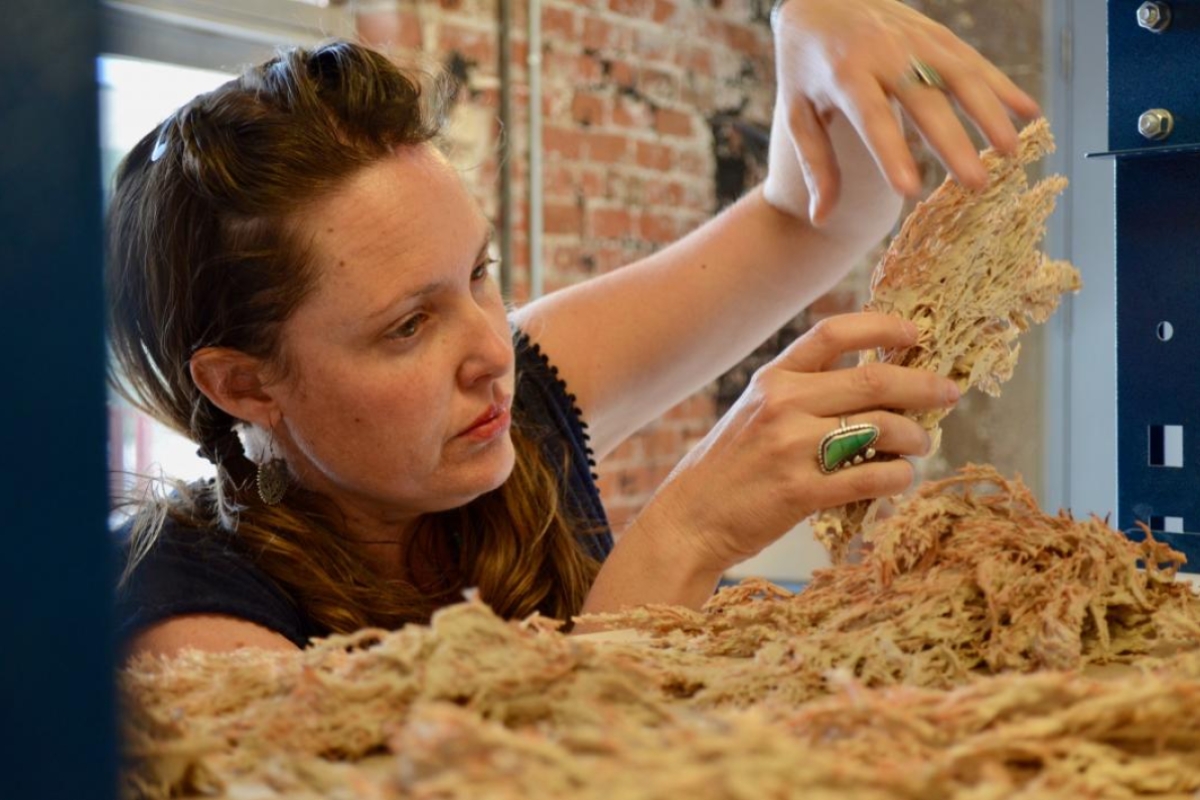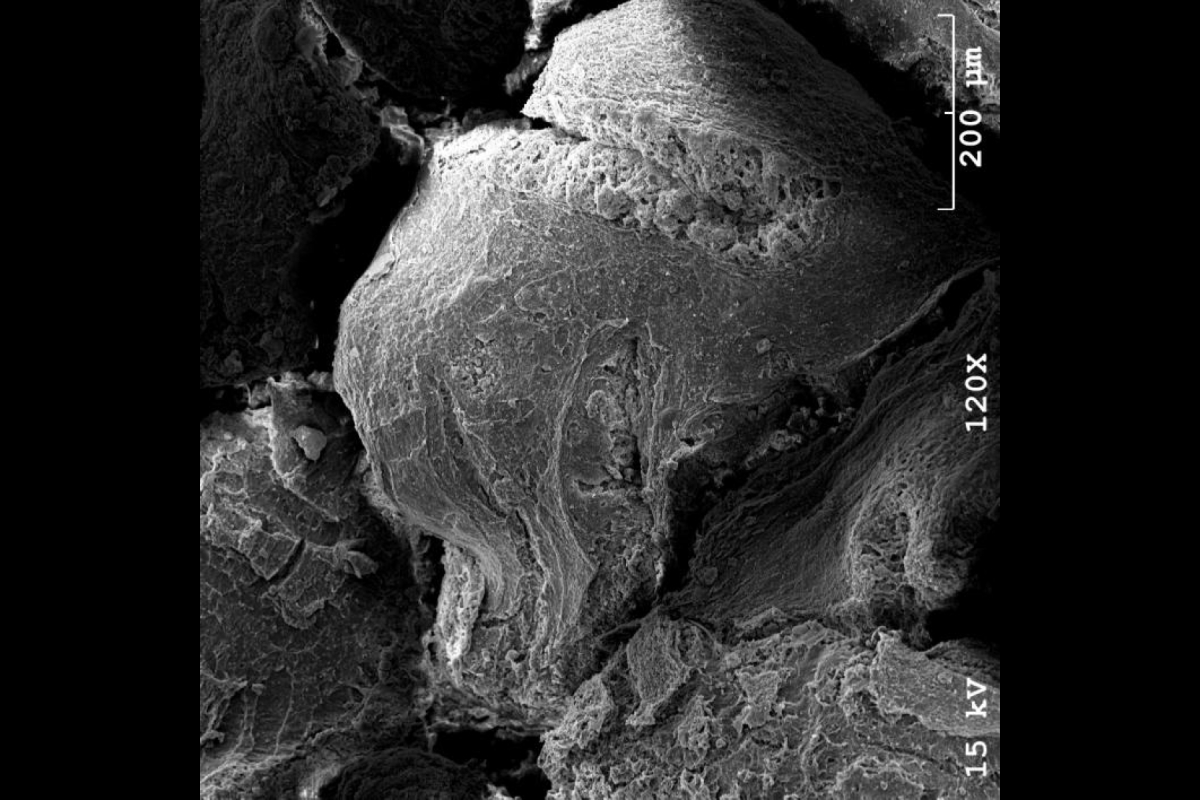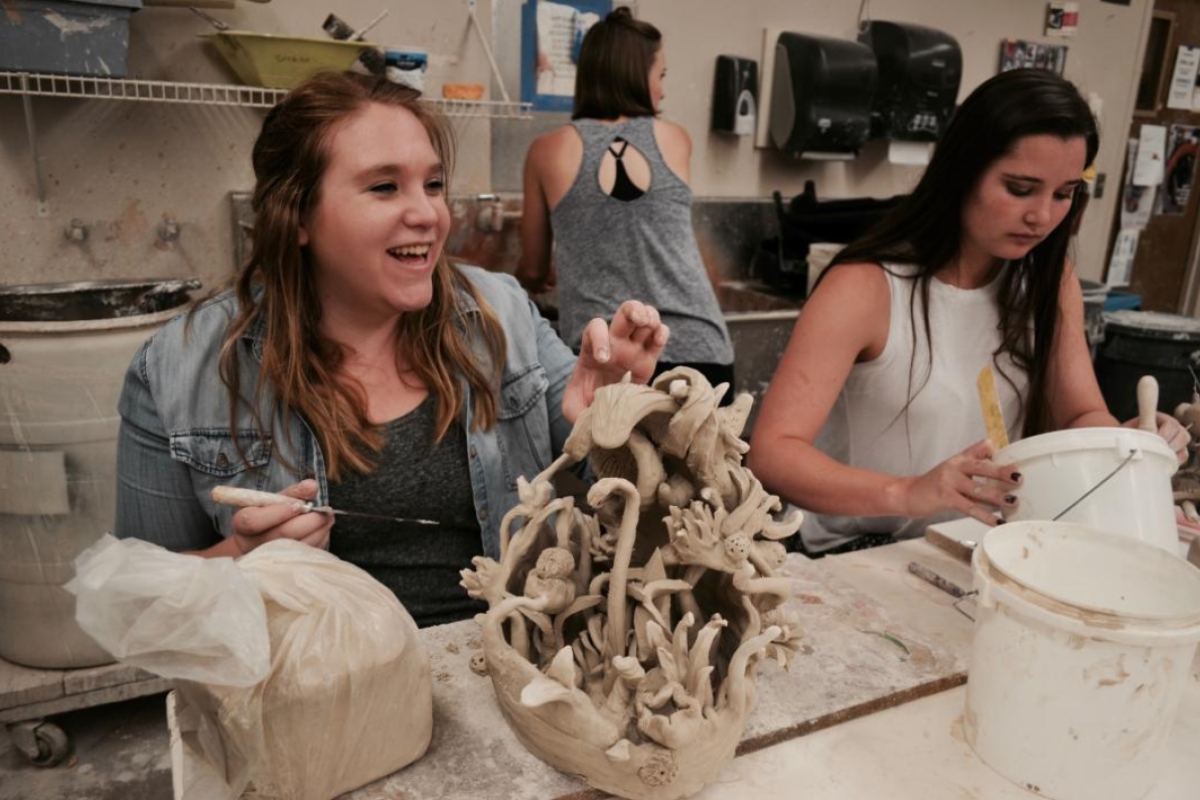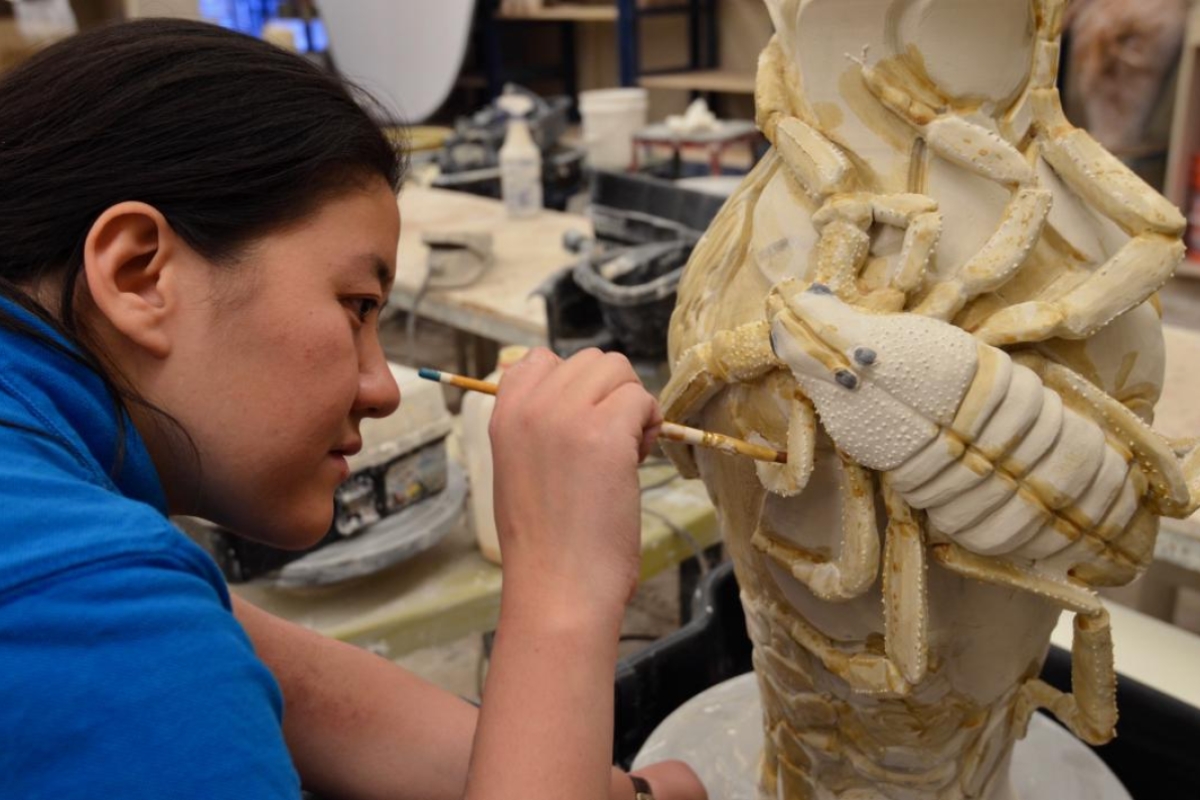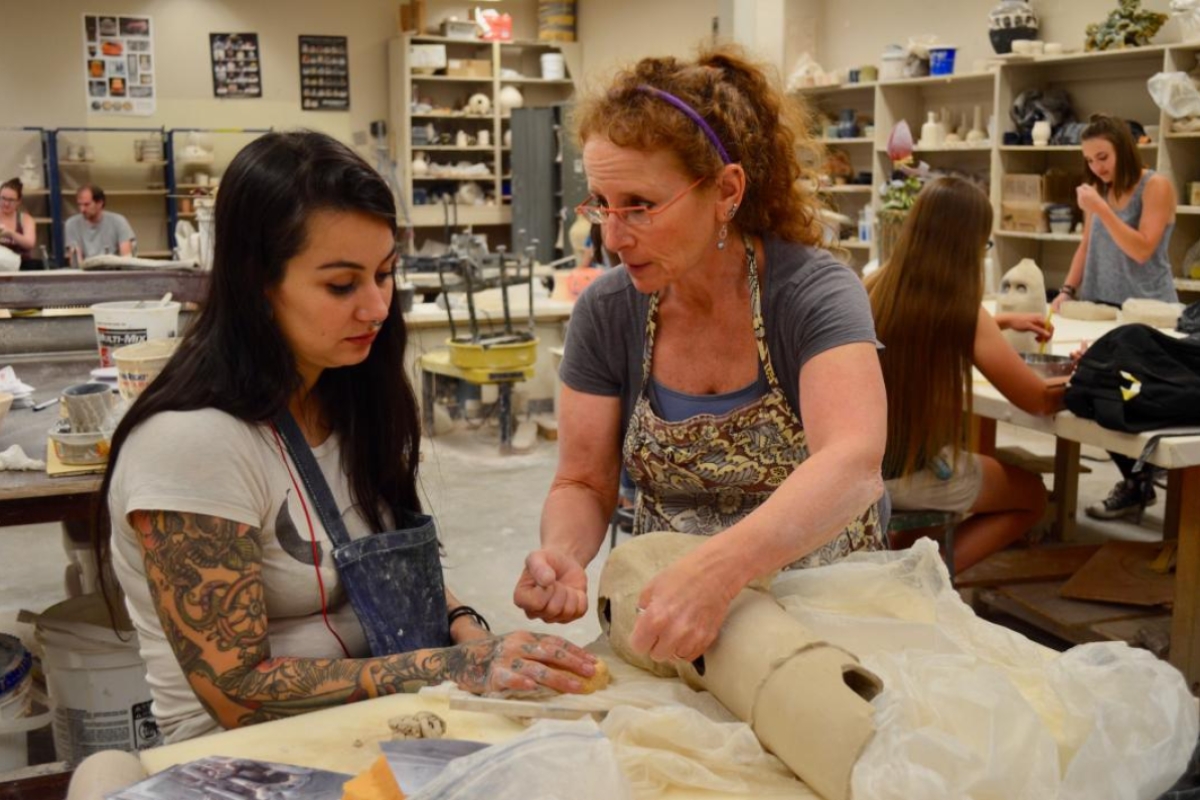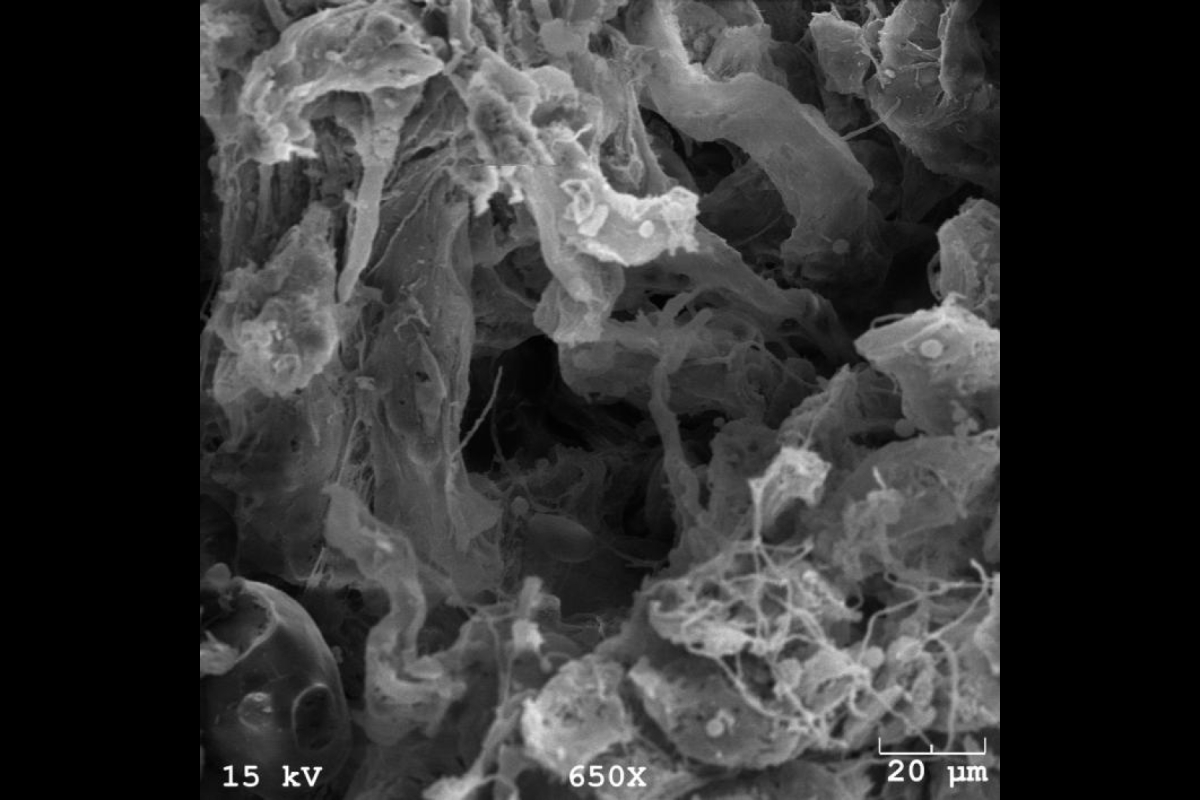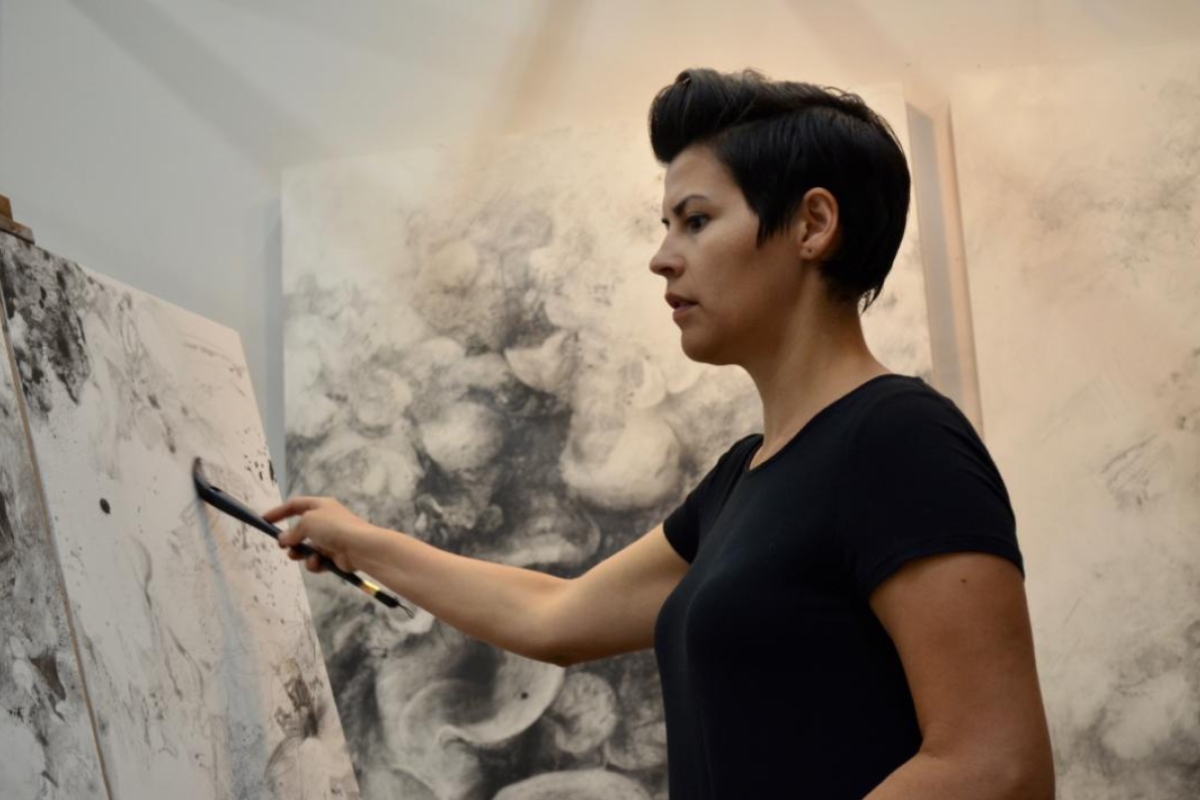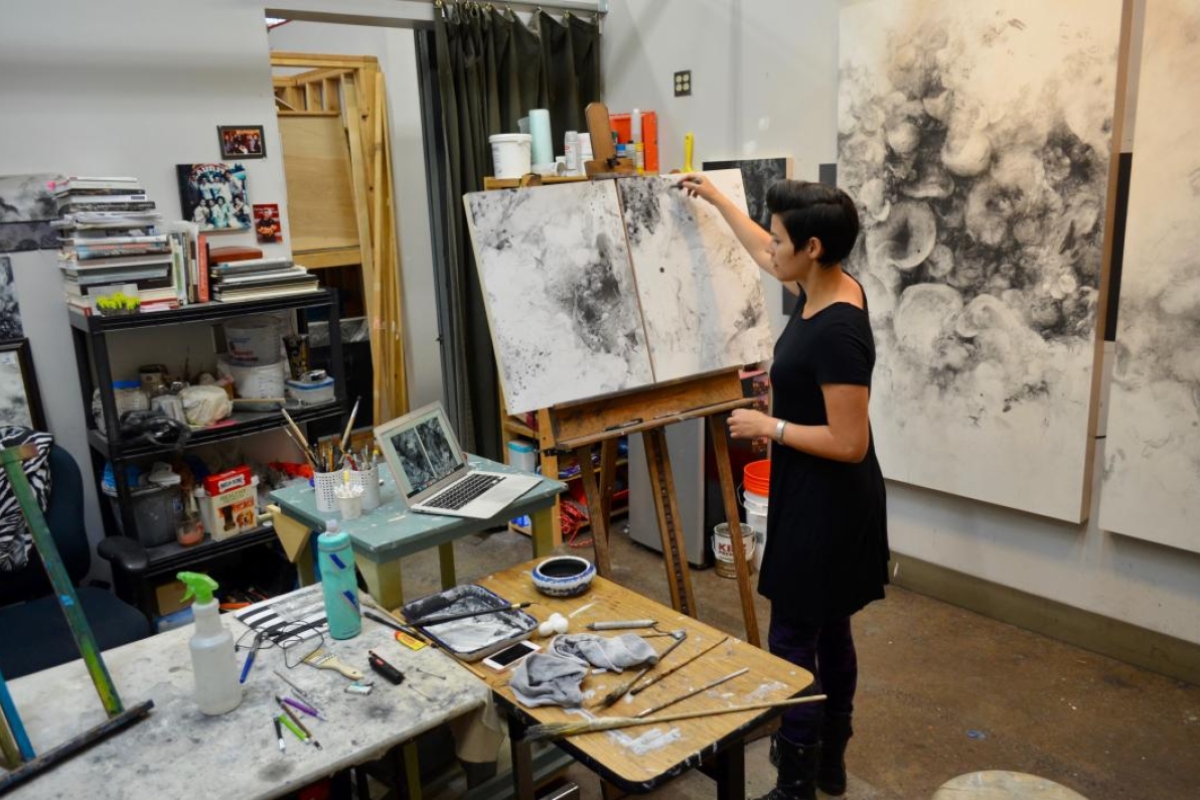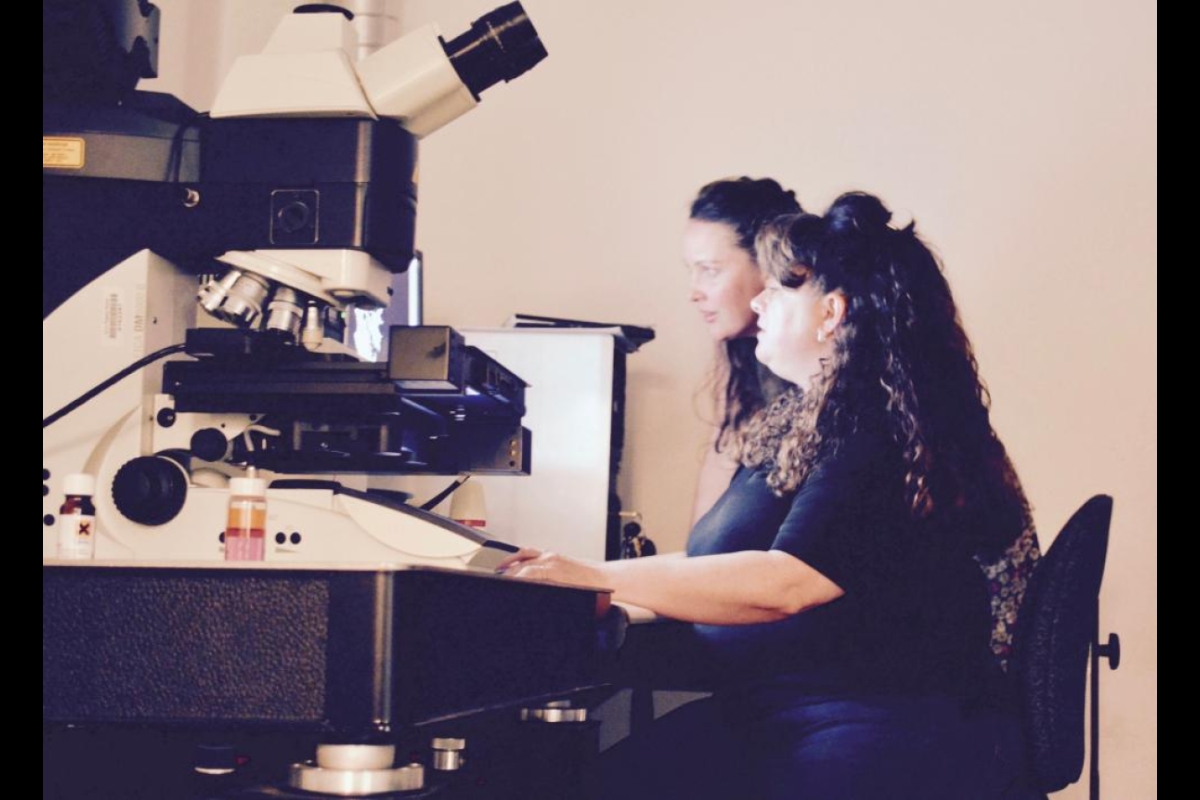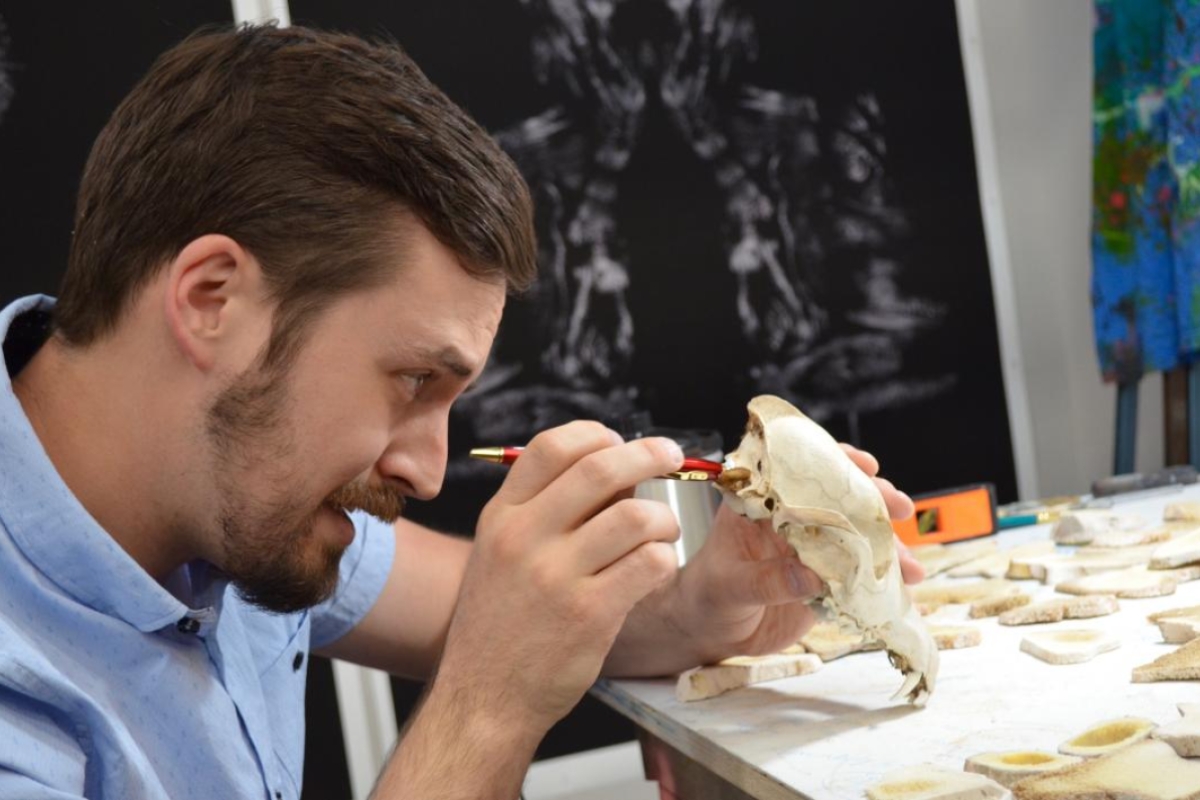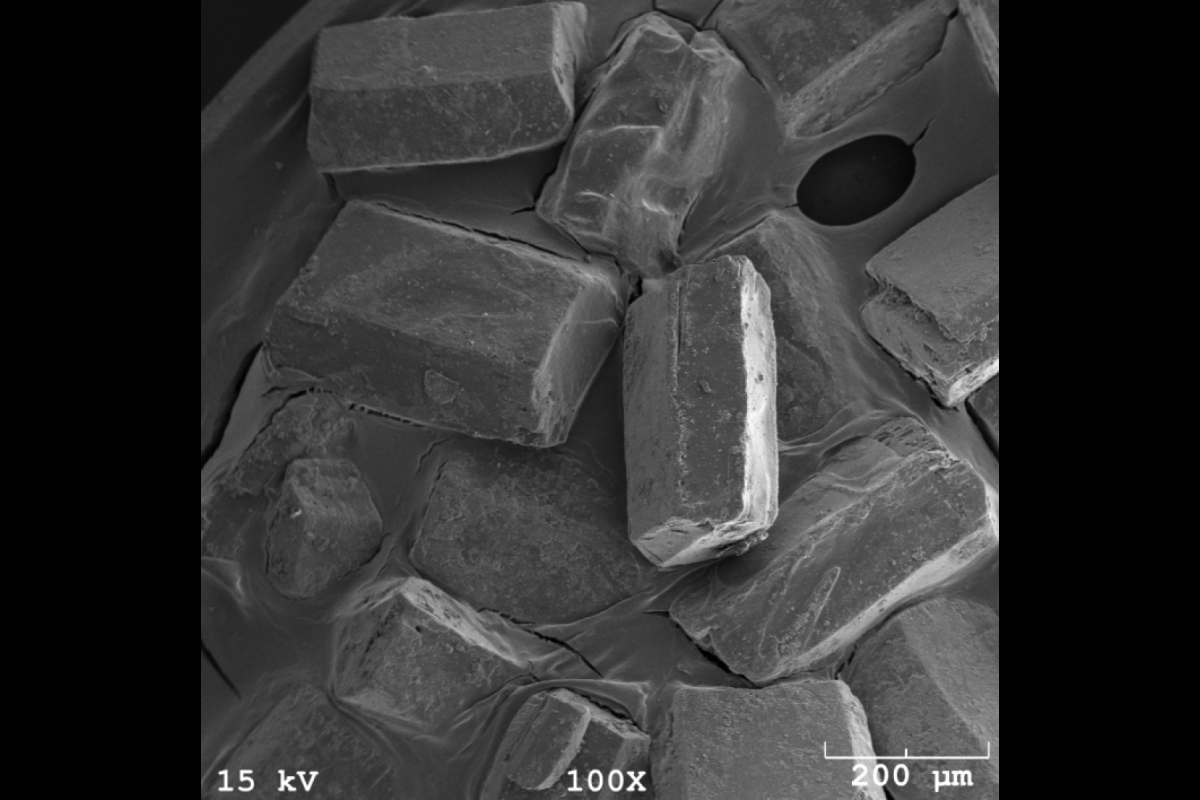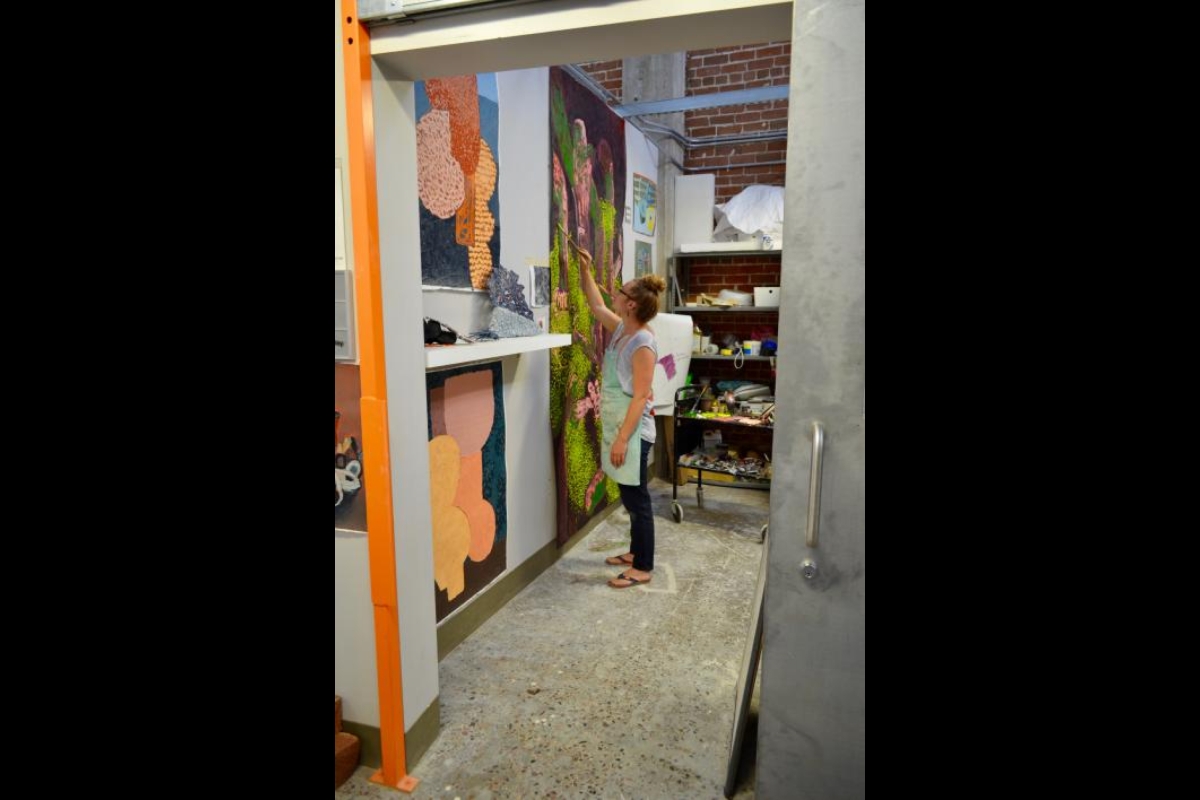Exploration. Creative observation. Removing the limits of conventional thinking.
These are the words of Arizona State University art students exercising their creative minds as part of “Sculpting Science,” a breathtaking art exhibit with incredible ceramic sculptures, mixed media and drawings influenced by microscopic nature.
In its second showing, 18 artists and nine scientists have paired up to examine the world around us in a whole new way. Undergraduate and graduate students with the School of Art and scientists with the School of Life Sciences explored a variety of subjects under the microscope to find inspiration for new artwork based on their experiences seeing the microscopic world.
“One of the exciting things about this project is that it’s innovative and unexpected — something ASU excels at,” said Robby Roberson, a School of Life Sciences associate professor and microbiologist who studies fungi. “There is a really interesting world that can be seen only through microscopy. The images of something as ordinary as a mushroom can be incredibly exciting when seen under extreme magnification.”
Termite guts, fungi, plants, bones, insects and cells — even sugar and pomegranates — were some of the subjects studied. For the artists, the microscopic images can be invigorating.
“Art students gain valuable skills, such as integrating content into their artwork and interpreting information into visual research, by immersing themselves in science for artistic inspiration,” said Susan Beiner, a ceramics associate professor at the School of Art.
“This rewarding project has grown this year, as students worked directly with a group of life sciences professors in their labs. The students also investigated how their visual interpretations can embody specific ideas of scientific research,” she added.
The “Sculpting Science” exhibit expanded this year to include mixed media and drawings, along with ceramics pieces. Twenty-four fascinating art pieces are slated to be on exhibit, as well as many high-resolution microscopy images.
Amanda Collins, a recent graduate from the ASU ceramics program, said art and science have much in common.
“They both look at the world through new and different perspectives. In many ways, an artist is trying to widen the views of their audience to think and feel in a new or different way, while science strives to widen our understanding of the world around us using new and different means. Both bring to the forefront questions that have not been answered before and seek to enlighten,” Collins shared in her artist profile.
“Sculpting Science” sprang to life in 2014 when professors Roberson and Beiner began a collaborative study examining ceramic surfaces at high resolution by using scanning electron microscopy (SEM). Their hope was that these interactions would result in ongoing exchanges of positive and synergistic ideas, creativity and knowledge to produce provocative works of art.
This artwork would then be on display for the ASU and surrounding communities. Another goal was to enrich the lives of ASU students, faculty and the greater community. Funding for the program is provided by the School of Life Sciences and the School of Art.
'Sculpting Science' exhibit
When: Grand opening 6–9 p.m. Oct. 26. Normal exhibit hours, noon–5 p.m. Oct. 26–28, Nov. 2–4, Nov. 9–11 and Nov. 16–18; First Fridays hours 6–9 p.m. Nov. 3.
Where: Step Gallery at Grant Street Studios, 602 E. Grant St., Phoenix.
Admission: Free.
Details: Learn more here. Earn rewards points by checking in at "Sculpting Science" with your ASU Sun Devil Rewards app, which can be downloaded from Google Play or the Apple App Store.
The following School of Life Sciences faculty and staff shared their labs as part of this project: Robby Roberson, Page Baluch, Nico Franz, Brian Smith, Jason Newbern, Julie Stromberg, Charlotte Johnston, Gillian Gile, Liz Makings and Heather Hutchison Scott. "Sculpting Science" features artwork created by the following ASU graduate and undergraduate students: Colleen Cahill, Nathan Clark, Amanda Collins, Haley Farley, Stephanie Gonzalez, Laura Korch Bailey, Nicole Kudela, Brandi Lee Cooper, Mary Maghee, Tamaki Matsumoto, Hans Miles, Amanda Ohnmacht, Jolleen Oltmanns, Jessica Palomo, Chris Phillips, Ross Quesnell, Emily Ritter, Nicole Davy and Gayle Timmerman.
More Science and technology

ASU researcher part of team discovering ways to fight drug-resistant bacteria
A new study published in the Science Advances journal featuring Arizona State University researchers has found vulnerabilities in certain strains of bacteria that are antibiotic resistant, just…

ASU student researchers get early, hands-on experience in engineering research
Using computer science to aid endangered species reintroduction, enhance software engineering education and improve semiconductor material performance are just some of the ways Arizona State…

ASU professor honored with prestigious award for being a cybersecurity trailblazer
At first, he thought it was a drill.On Sept. 11, 2001, Gail-Joon Ahn sat in a conference room in Fort Meade, Maryland. The cybersecurity researcher was part of a group that had been invited…

